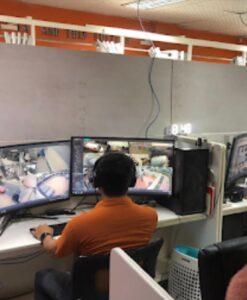Live monitoring refers to the continuous real-time surveillance of a security system by trained personnel. Who are responsible for detecting and responding to security threats or incidents as they occur.
Benefits:
Immediate Response:
Live monitoring provides an immediate response to security incidents. Allowing security personnel to take quick and appropriate action to prevent or minimize damage.
Enhanced Security:
Live monitoring provides an additional layer of security, complementing other security measures, such as alarms or access control systems.
Proactive Deterrence:
The presence of live monitoring can serve as a proactive deterrent to potential security threats. As the knowledge that the premises are being monitored can discourage criminal activity.
24/7 Surveillance:
Live monitoring can provide round-the-clock surveillance, ensuring that the premises are protected at all times.
Reduced Risk of Losses:
Live monitoring can help reduce the risk of losses due to theft, vandalism. Or other security breaches, as trained personnel can quickly respond to any incidents.
Increased Employee Safety:
Live monitoring can help increase employee safety. As security personnel can quickly respond to any safety threats, such as fires or medical emergencies.
Remote Monitoring:
With modern technology, moreover live monitoring can be done remotely. Allowing for cost-effective security solutions for locations that are geographically dispersed.
Quick Incident Reporting:
Live monitoring allows for quick and accurate reporting of security incidents to law enforcement or emergency services, moreover improving response times and minimizing damage.
In summary, It is an essential aspect of security, providing immediate response to security incidents. It enhanced security, proactive deterrence, 24/7 surveillance, reduced risk of losses, increased employee safety, remote monitoring, and quick incident reporting.

